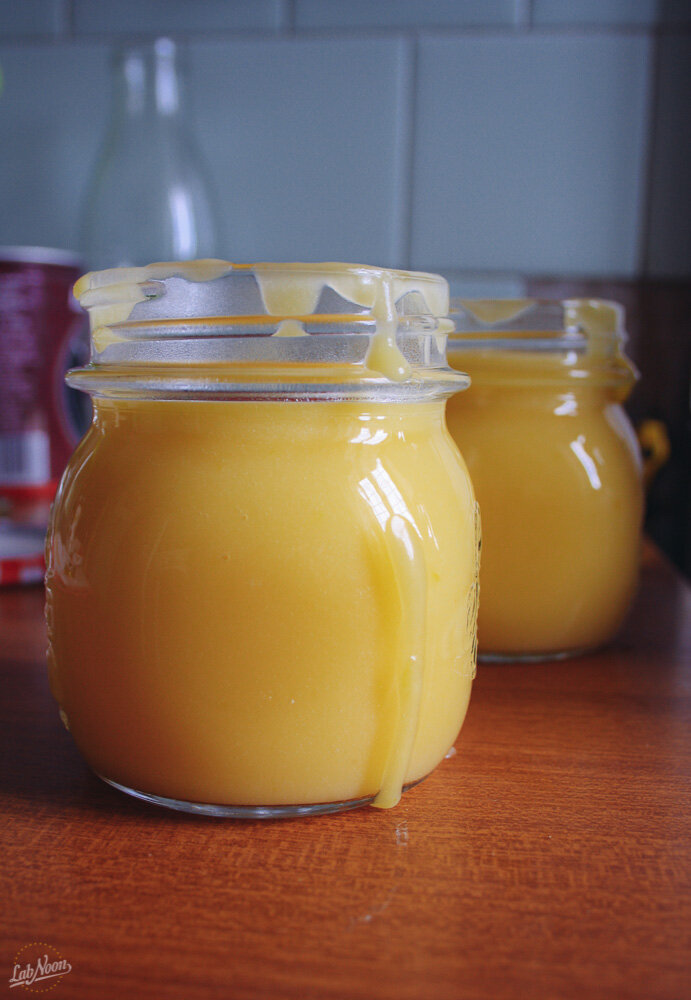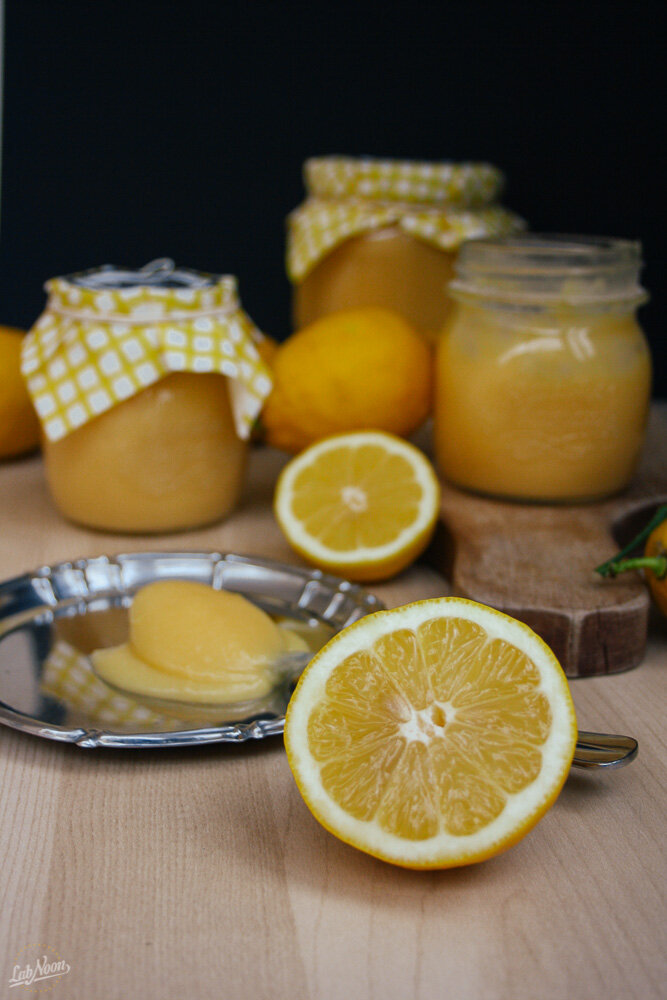Scents, Memories and a Perfect Lemon Curd
I think cooking in so many ways is related to our memory. Sometimes we cook when we try to recreate a specific moment, rather than just a specific taste. Other times it’s just a flavor we remember from our childhood; the noise of chewing something crunchy, the taste of something sour that made our mouth twist, or the velvet sweetness of a special treat. Recreating flavors we have stored in our long time memories makes us feel like a child again, eternally young. Somehow it works like an elixir of life. With each bite you take, time loses its sense and years melt in the familiar aroma and texture and all of a sudden you’re twenty years younger, well at least for a couple of seconds.
But not all the time what you cook comes from such depth of your memories. In my case, it’s a curiosity that lingers with me once I have noticed something that looks tasty. Naturally, being passionate about food blogs, I get to see a lot of recipes. I also listen very carefully when people talk to me about food or their favorite recipe. Of course I don’t remember all of them, but bits of them stay in my head and come back to me later. That’s how I get my inspirations.
As for lemons, I must say I fell in love with them when I travelled to Amalfi coast about two years ago. The Amalfi cost, which is indeed one of the most beautiful and mesmerizing places of the world (not my words alone, UNESCO has listed it as a world heritage cultural landscape) is situated in the region of Campania in south Italy. This whole region and Amalfi cost in particular are famous for their divine lemons, which are quite larger than other lemons with unbelievably fantastic taste and smell. Now you should know that before this event, I was really never a lemon person, like I would have never got any lemon ice-cream or cake, or dessert of any kind. I was much more of a chocolate person, but then the encounter of lemons in Amalfi changed that forever. They do miracles with their big juicy lemons; their homemade Limoncello (a liqueur with lemon juice and zest), their lemon tiramisus, ice creams and much more. Since that moment I am curious and very excited about lemons. I have learned to appreciated the fantastic smell and the freshness they bring to almost every dish. Not to mention that often lemon desserts are much lighter in calories and fats than the ones with, say chocolate, (that’s if they’re not loaded with sugar or cream).
Then it happened, one very boring sunday, that I found an old cooking book about fruit preserves. It looked much more interesting than it actually was but the great thing about it was that it enlightened me that fruit preserves are not only jams. (This may sound obvious to you but I didn’t know that.) And there it was, in two pages decorated with green leaves and yellows kitchen clothes pattern, The Lemon Curd. I had absolutely no idea how the combination of lemons and eggs would have turned out (there were few pictures) but I was intrigued by the idea. I don’t remember what happened later that day, hopefully it didn’t remains as dull as it was earlier.
Now if you come from an Anglo-Saxon background my ignorance about curds might make you laugh. I discovered that they’re very popular in Britain; they have been an alternative to jams and jellies since the 19th century and they serve them with bread, cake or scones, preferably with afternoon tea. Can you picture the lovely scene of the British countryside with pretty victorian props, nice tea and fresh perfume of lemons?
So, a fruit curd is basically a cream with the fruit juice and zest, eggs and butter. Some people use only egg yolks, some people (like me) use whole eggs. I find egg yolks alone a little too heavy for a light lemon curds and I think it would taste too eggy, and of course a little protein from the egg whites wouldn’t do you harm.
Important note: The only real secret to get a good lemon curd (or any other lemon recipe) is to use untreated, possibly organic lemons. These lemons do not look perfect and spotless and they are not shiny. If they are, just know that your lemons are “fake”! They’re not good in the taste and smell, most times they’re not juicy and most importantly they preserve the chemicals in their zest which is not only a compromise on the taste but also on the health.
I found out that you can make lemon curd in small or large quantities and keep them in mason jars. I tried different recipes in small quantities and after different tries I can say I have found the ultimate combination. The right amount of butter, eggs and sugar for each lemon. I guarantee that this recipe makes a light lemon curd that is balanced in sweetness and sourness. Basically you need as many eggs as lemons, about 30-40 grams of sugar and 50 grams of butter for each lemon. This is a recipe with 4 lemons, which should turn about 2 small jars.
The Perfect Lemon Curd
Ingredients
4 untreated lemons
4 free range possibly organic eggs
150 gr. sugar
200 gr. cold unsalted butter
INSTRUCTIONS
Wash the lemons very well, grate the zest of one lemon and juice them all. Careful with seeds, you wouldn’t want any in your velvety curd. Cut your butter into small cubes (you may need to refrigerate the butter cubes if it’s too warm). In a large bowl beat the eggs very well, then add the sugar and mix well, and now add the lemon juice and zest and mix everything very well.
Pour the mix in a pot on low flame and keep whisking and never stop. If you don’t whisk you will get egg lumps. When you see the mixture is getting warm add a couple of butter cubes and let them melt and cool down the mixture. Never stop whisking! We want to keep the temperature of the mixture down, so each time the butter has melted and you see it’s getting warmer you add some more butter. In order to check if the curd is ready, put a spoon in the mixture and take it out and run your finger on it. (and lick it!) If the mark stays on the spoon your lemon curd is ready. Turn off the heat and pour in to the jars. Remember to let it cool before sealing them.
Lick the pot clean. I know, it’s amazing.
You can serve the curd on cakes, scones, and breads and why not even fruit. Try to resist eating it off the jar.
Let me know if you make it. Send me pictures on Facebook!






